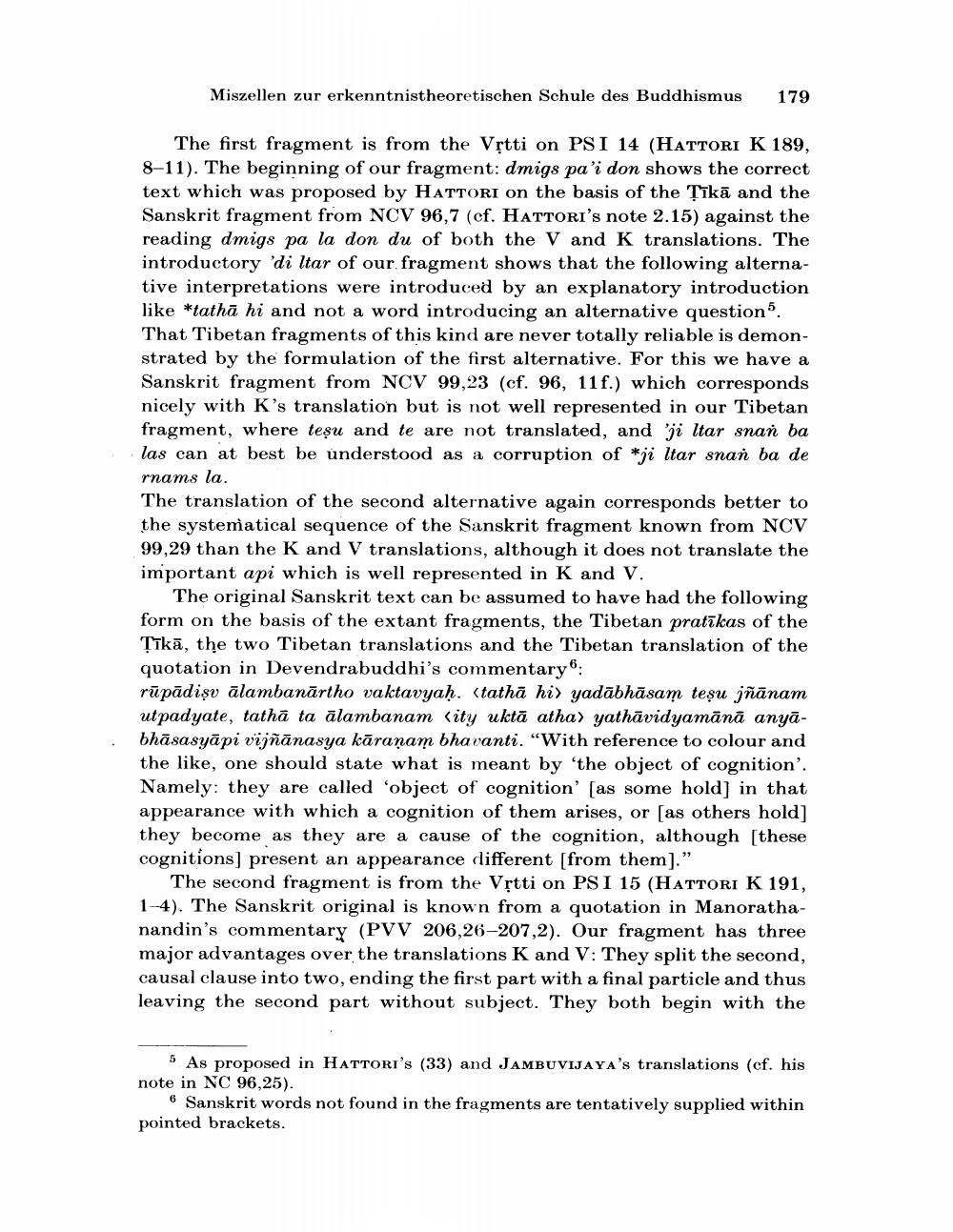________________
Miszellen zur erkenntnistheoretischen Schule des Buddhismus
179
The first fragment is from the Vrtti on PSI 14 (HATTORI K 189, 8-11). The beginning of our fragment: dmigs pa'i don shows the correct text which was proposed by HATTORI on the basis of the Tikā and the Sanskrit fragment from NCV 96,7 (cf. HATTORI's note 2.15) against the reading dmigs pa la don du of both the V and K translations. The introductory 'di ltar of our fragment shows that the following alternative interpretations were introduced by an explanatory introduction like *tathā hi and not a word introducing an alternative question. That Tibetan fragments of this kind are never totally reliable is demonstrated by the formulation of the first alternative. For this we have a Sanskrit fragment from NCV 99,23 (cf. 96, 11f.) which corresponds nicely with K's translation but is not well represented in our Tibetan fragment, where teşu and te are not translated, and ji Itar snan ba las can at best be understood as a corruption of *ji ltar snan ba de rnams la The translation of the second alternative again corresponds better to the systematical sequence of the Sanskrit fragment known from NCV 99,29 than the K and V translations, although it does not translate the important api which is well represented in K and V.
The original Sanskrit text can be assumed to have had the following form on the basis of the extant fragments, the Tibetan pratīkas of the sīkā, the two Tibetan translations and the Tibetan translation of the quotation in Devendrabuddhi's commentary rūpādişv ālambanārtho vaktavyaḥ. (tathā hi) yadābhāsam teșu jñānam utpadyate, tathā ta ālambanam (ity uktā atha) yathāvidyamānā anyabhāsasyāpi vijñānasya kāraṇam bhavanti. "With reference to colour and the like, one should state what is meant by 'the object of cognition'. Namely: they are called 'object of cognition' [as some hold) in that appearance with which a cognition of them arises, or (as others hold] they become as they are a cause of the cognition, although [these cognitions) present an appearance different from them)."
The second fragment is from the Vștti on PSI 15 (HATTORI K 191, 1-4). The Sanskrit original is known from a quotation in Manorathanandin's commentary (PVV 206,26–207,2). Our fragment has three major advantages over the translations K and V: They split the second, causal clause into two, ending the first part with a final particle and thus leaving the second part without subject. They both begin with the
5 As proposed in HATTORI's (33) and JAMBUVIJAYA's translations (cf. his note in NC 96,25).
6 Sanskrit words not found in the fragments are tentatively supplied within pointed brackets.




